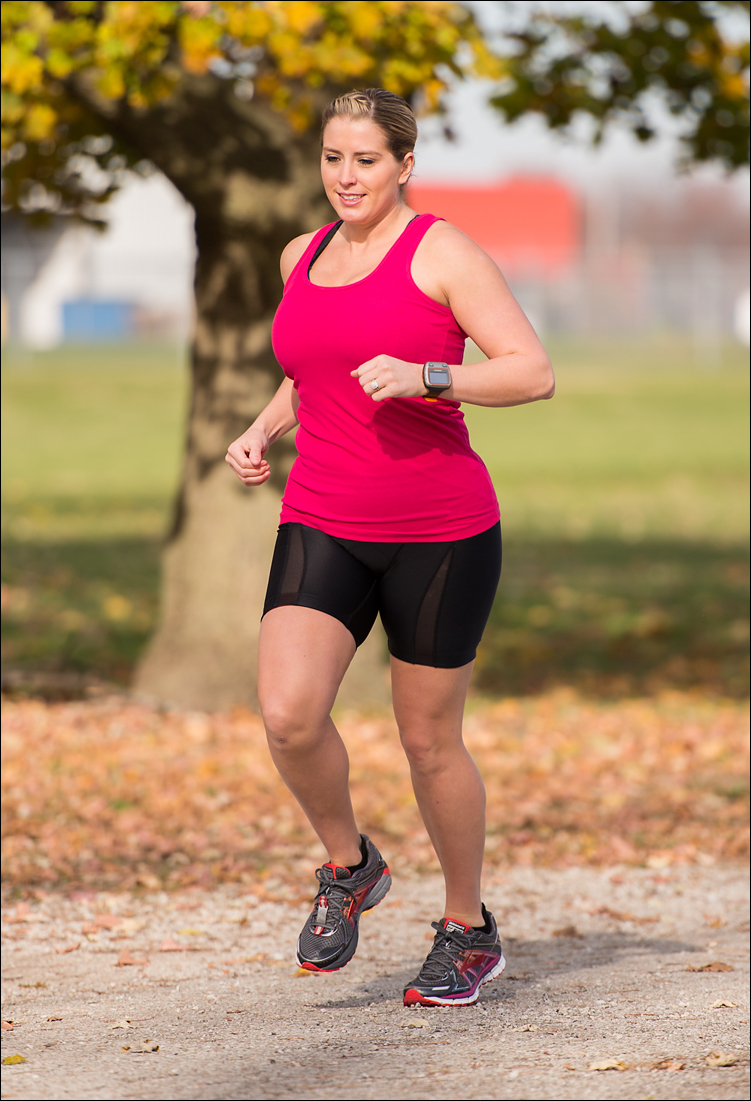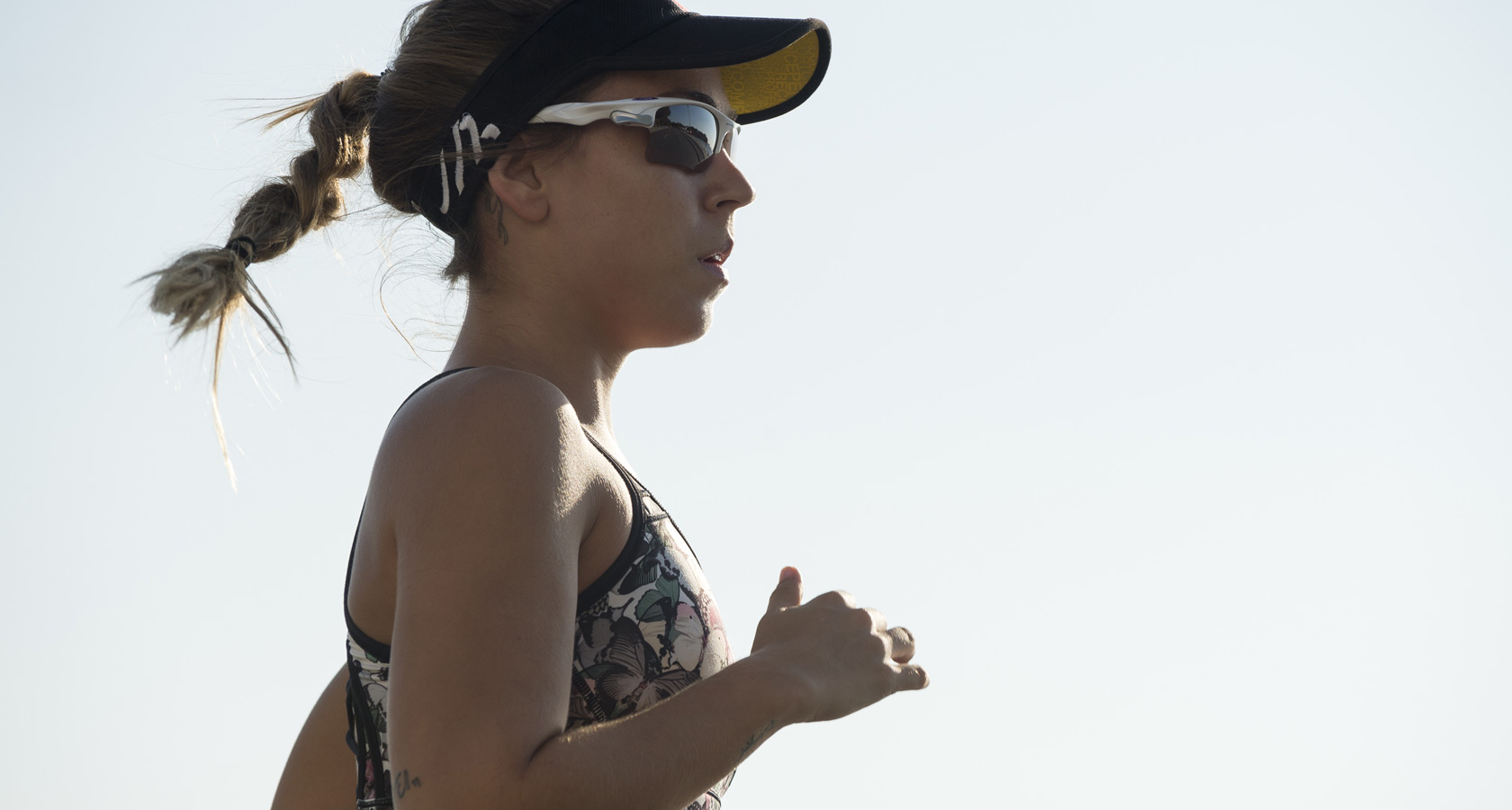Technique for the Intermediate Runner
Running is one of those activities that all of us think we know how to do, but unfortunately, many times we are doing it wrong. Let’s look at how we can reverse that and turn running into a lifelong sport.
Run Cadence
From a triathlon perspective, we need to understand the effect that the bike portion of race has on the third leg of the race. Ideally, you will have biked with an efficient pedal stroke at around 90 revolutions per minute (rpm) during the bike segment of the race. This effort will have set up your legs for the transition into the optimal run cadence of 90 foot strikes per minute. When done properly over time, this pace of foot strike will become second nature, but for now we will focus on how to practice this in training.
If you own a gadget that tracks your run cadence, focus on that number and aim for our desired number of 90. If you don’t have such a device or if you are having trouble syncing up with the magic number of 90, try this trick. Download a simple and free metronome app to your phone or favorite mobile device. Plug in a set of headphones and set the app to 90 beats per minute. Set a treadmill to a moderate speed for your ability and focus on matching your foot strikes to the tempo of the beat. You may need a little practice, so be sure to start slow. You will likely have to play around with your stride length to get the timing down.
Another gadget you may already have that can help here is a tempo trainer normally used for swimming. This silver-dollar-sized gadget, which you clip to your hat or visor, supplies you with a rhythm or tempo. Note here that many coaches discourage running or training with headphones playing music because the music tempo can affect your foot strike tempo. For this reason, we encourage you to retire the headphones for your training until you get the tempo locked in.
Running Form
Now that you have the timing down, let’s focus on your running form. Proper running form helps you conserve energy while moving, increases lung performance and prevents unnecessary fatigue of your head, neck and shoulders that could ultimately slow you down. By maintaining proper alignment and position as we discuss here, you’ll be able to finish the run portion of your race in good form and good spirits.
Body Position
While running, keep your head and neck up and focus your eyes approximately 2 to 3 feet (60 to 90 cm) out ahead of you. Your upper body and shoulders are relaxed, the core is engaged and the spine is in a slight forward lean. Your arms are bent at a 90-degree angle. Keep them close to your body and do not cross them in front of your body as you run. Hands are in a soft fist, and your thumbs are on top of your fists. Your hips and pelvis should be stable and move in a horizontal plane while your legs help create forward momentum. See figure 7.1 below for an example of proper running form.
Foot Strike
Running and walking are two naturally occurring methods of transportation that the body develops from infancy. As children, we achieve most of our motion by running. But many parents go about day-to-day life frustrated from telling their kids to slow down and not run, whether in the house, in school, in the mall or into the street. As we age, we become more sedentary, and walking becomes our primary method of transportation. We run less, and when we do it, it’s not for the same reasons we had when we were children. This point has an influence on how we run. As children we are not taught how to run; we do it because our bodies know what to do. If you watch a child run, you will see a natural fluid midfoot strike along with functional arm swing. The body was designed to absorb impact and propel itself forward quickly. Walking is fundamentally different. A walking step lands in front of the body’s center of gravity, rocks over the midfoot, and pushes off the back at an angle equal to where it landed in the front. Over time and because of a lot of misinformation circulated in the 1970s during the marathon boom, most adults were told that the way they walk was supposed to be the same way they run. This misconception caused most of the running injuries over the last 40 years.
Your foot normally strikes the ground with about three times the force of your body weight during an average running stride. For a 200-pound (90 kg) runner, each foot needs to absorb 600 pounds (27 kg) every time it lands. If the foot lands in front of the body’s center of gravity, the impact point becomes the heel and the mechanics of the leg are such that the ankle is at a 90-degree angle and the knee is locked out straight. Because the ankle and the knee joints are not absorbing any impact, most of it is left to be absorbed by the product in the heel of your running shoe. Because the impact cannot be completely absorbed by that product, it reverberates up through the tibia and fibula, across the cartilage of the locked knee joint, and through the femur and pelvis, eventually ending up in the lower back. This method of absorbing impact is not sustainable long term. Your bones and joints were not designed to absorb impact in this manner.
By simply moving the foot under the center of the body’s gravity and allowing the midfoot to strike the ground (see figure 7.2 below), you create an entirely different model of impact absorption. In this position, the ankle is able to flex along with the knee as the impact of the body hits the ground. The hypothetical 600 pounds (270 kg) is now absorbed by the muscles in the foot and the legs. The joints simply facilitate motion, and the bones essentially provide stability.
When you improperly strike the ground with the heel, the muscles do not provide much more than some functional movement for the skeleton. But when you use a midfoot strike, the muscles absorb the load of the impact and propel the body forward. Thus, strengthening the muscles to endure impact over a longer time (endurance training) becomes a logical function of our training. A by-product of a proper midfoot strike is that you are now less likely to incur bone fractures and joint damage from repeated impact absorption as you would when you strike the ground with the heel first. Using a midfoot strike is how you turn running into a lifelong sport, not just a young person’s game.
You can use several techniques to learn the midfoot style of running. We do not endorse any particular style or brand of training. Remember that in the process of relearning how to run properly, you must approach the transition from heel striking to midfoot striking with caution and patience. By converting too quickly, you will experience an overload in your calves and quads, which can lead to other injuries. A gradual approach lasting for 6 to 10 weeks along with strength-training movements like calf raises and lunges will help develop the muscle endurance your body needs to readapt to its old running style.
Running Warm-Up
Before starting any run, you need to activate your muscles by doing a short dynamic warm-up. If you can spend even 5 or 10 minutes before each run, your muscles will be activated, warmed up, and ready to go. If you are short on time, choose two from the following list. You need to have great posture, tighten your abs and focus on what you are doing. Effective dynamic running drills include the following:
Butt kicks: With good posture, start jogging in place. As you’re jogging, emphasize your back stride, bring your heel to your butt, and try to make contact between your heel and your butt. If you can’t reach, don’t worry. Just bring your heel up as far as you can.
Carioca: Move sideways with your arms out and cross right over left, right behind left, right over left. Repeat by starting with the left foot first: left over right, left behind right, left over right. Move in one direction for 10 seconds, switch directions, and repeat.
Knee hugs: Standing with good posture, grab one knee with both hands and raise it toward your chest while firing your glutes in your anchor to maintain your balance. Release your knee and step forward with that leg, alternating legs while you walk forward. Do 10 on each side.
Heel walks: Walk forward with your weight on your heels, flexing your feet so that the balls of your feet are off the ground for 20 to 30 seconds. This drill activates your shin muscles while stretching out your calves.
Forward skip: Jog slowly while skipping forward for 20 to 30 seconds. Repeat three times.
Jumping jacks: Stand with good posture with your arms and legs together. Jump so that your arms and legs are apart. Repeat 10 to 15 times.
Figure 7.1 Proper running form.

Figure 7.2 Center of gravity foot strike.



